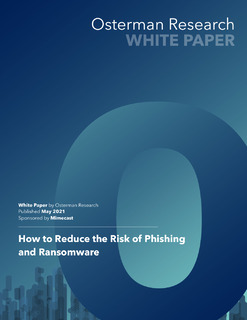Cybersecurity challenges abound for organizations across the world. The tsunami of phishing attacks that threaten account compromise, data breaches and malware infection remains a critical threat to neutralize. Ransomware is a second critical threat, with a well-played ransomware attack capable of bringing an organization to a complete halt, and in some cases putting it out of business permanently (e.g., Travelex1 and Vastaamo2 ). Both phishing and ransomware were critical threats before the health pandemic of 2020 forced a sudden shift to remote working, and such a move has only served to intensify the threat levels. The Global Risks Report 2021, a recently released publication from the World Economic Forum, ranks information security as the top technology objective that has become a greater priority due to COVID, noting that it is complex, there is a skills shortage, and cybercriminals are difficult to track, among others.
This white paper and the survey commissioned for this research looks specifically at the threats of phishing and ransomware, and how the risks of both can be reduced.

